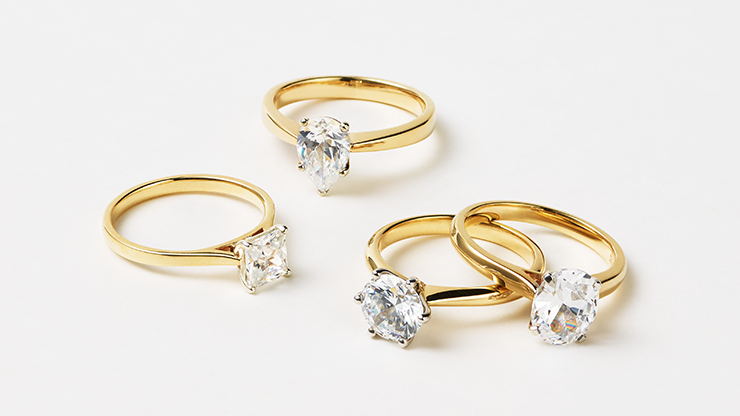The Rise of Lab Grown Diamonds
Over the past decade, lab grown diamonds have steadily gained recognition and popularity in the jewelry industry. With growing consumer awareness around sustainability, ethics, and value, many are turning to these innovative alternatives to mined stones. What sets lab grown diamonds apart is not just how they are made but also how they offer transparency in quality and origin. For those unfamiliar with how to assess a diamond’s worth, understanding the 4Cs—cut, color, clarity, and carat—is essential. This principle applies equally to lab grown stones, offering a trusted standard for evaluation.
As lab-created gems become more accessible and accepted in mainstream jewelry, consumers are asking the same questions they would about mined diamonds. How is the stone graded? What affects the price? Is one lab diamond better than another? The answer lies in the consistent use of the 4Cs framework, a globally recognized method of measuring a diamond’s characteristics. Whether the stone is formed in nature or in a lab, this system remains the foundation for choosing the perfect gem.
What Are the 4Cs and Why They Matter
When selecting any diamond—natural or lab grown—the 4Cs provide a comprehensive way to evaluate its quality. These four factors directly influence a diamond’s appearance, rarity, and cost. Understanding each of these components empowers buyers to make informed decisions, especially when considering lab grown diamonds 4Cs.
Cut refers to how well the diamond has been shaped and faceted. It affects the way light interacts with the stone, determining its brilliance and sparkle. A well-cut diamond reflects light beautifully, while a poorly cut one can appear dull, regardless of its other attributes.
Color evaluates the absence of color in a diamond. Diamonds are graded on a scale from D (colorless) to Z (light yellow or brown). The less color present, the higher the value. Many lab grown stones are created to achieve near-perfect color grades, giving consumers more high-quality options at accessible price points.
Clarity measures the internal and external flaws of a diamond, known as inclusions and blemishes. Most diamonds contain some imperfections, but those with fewer inclusions are considered more valuable. Since lab conditions are controlled, lab grown diamonds often have fewer flaws compared to their mined counterparts, resulting in higher clarity grades.
Carat represents the weight of the diamond. While larger stones are generally more expensive, two diamonds of the same carat weight can have vastly different values based on their cut, clarity, and color. This is why evaluating all four Cs together is critical when selecting a gem.
How Lab Grown Diamonds Compare to Mined Stones
Lab created diamonds are identical to natural diamonds in terms of physical structure and chemical composition. They are not simulants like cubic zirconia; they are real diamonds. What distinguishes lab grown diamonds is how they are formed: through scientific methods such as Chemical Vapor Deposition (CVD) or High Pressure High Temperature (HPHT). These processes replicate the conditions under which natural diamonds form, but within a laboratory environment.
When it comes to the 4Cs, lab grown diamonds 4Cs are graded using the same standards and the same gemological institutes, such as GIA (Gemological Institute of America) and IGI (International Gemological Institute). This consistency in grading assures consumers that they are receiving the same quality assurance and value metrics used for natural diamonds. However, lab grown diamonds typically offer better value, as they cost significantly less for similar quality.
Choosing the Right Stone for You
Selecting a diamond is a personal decision, often tied to major life events such as engagements, anniversaries, or celebrations. For buyers interested in combining modern values with timeless beauty, lab grown options present an ideal solution. The best way to begin is focusing on the lab grown diamonds 4Cs, just as you would with a mined diamond. This ensures that your choice is not only beautiful but also measured globally recognized standards.
You may decide, for instance, to prioritize carat size over clarity or seek a perfect cut to maximize brilliance, even if it means selecting a slightly lower carat. The 4Cs give you the flexibility to balance your preferences with your budget. With lab grown diamonds, this balance is easier to achieve thanks to their affordability and ethical appeal.
The Smart Future of Diamond Buying
As consumer values evolve, the future of the diamond industry is clearly shifting toward sustainability, transparency, and technology. The increasing demand for lab grown diamonds reflects a broader trend toward conscious consumerism. People want to know where their jewelry comes from, how it was made, and whether it aligns with their values. In this context, the 4Cs remain a reliable guide, helping buyers navigate the market with clarity and confidence.
Understanding the lab grown diamonds 4Cs allows you to appreciate the science, precision, and craftsmanship behind every stone. Whether you’re choosing a classic solitaire or a custom-designed piece, knowing how to evaluate cut, color, clarity, and carat ensures your investment is both meaningful and intelligent.




